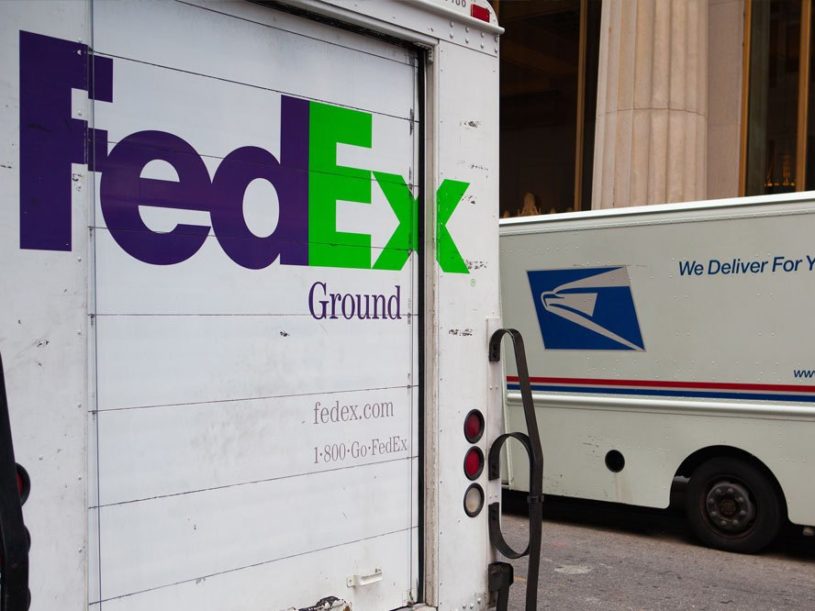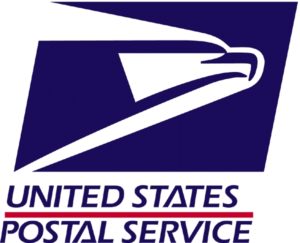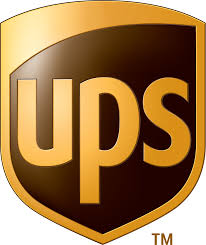Shipping is one of the core operations of your subscription business. Partly because it’s built directly into COGS (cost of goods sold), a good or bad shipping experience can come to define a customer’s experience with your subscription box. You may wonder, then, which carrier is best for subscription box shipping.
Generally, your options come down to four main carriers: the United States Postal Service (USPS), UPS, FedEx and DHL. Each carrier offers slightly different services, uses different technology, and affects operations in different ways.
About the Carriers: An Overview
One thing is true about these carriers: they aren’t the same. Each will provide a different experience for you and for your customers. Here’s the general consensus on each, along with some notes about our experiences with them and subscription boxes.
Shipping with the USPS
The US Postal Service is generally the safest, most secure and reliable shipping service. USPS tracking, while easy to access online (just enter a tracking number into Google and you’ll be directed to the tracking page), can have errors at times, where packages are apparently never delivered. (We’ve seen this happen at a rate of 1% or lower.) This isn’t uncommon across all shipping providers.
USPS also typically offers the best rates for packages under 2 pounds, and their cubic pricing structure is a simple, affordable way to ship anything above First Class mail but under 20 pounds of weight. USPS is also guaranteed to deliver to all domestic locations, APO, FPO, and DPO addresses.
Another benefit of using the USPS is their standards when it comes to fleet cleanliness, which are higher than UPS, FedEx, and DHL. That means your boxes arrive less damaged, scuffed up, or dirty.
Shipping with UPS
UPS is also a highly reliable shipping provider. UPS has a huge number of locations, and their shipping dashboard is –– mostly –– easy to navigate (meaning relatively simple tracking code lookup for support staff). From our internal experience, UPS is responsive, professional and eager to understand and offer streamlined solutions that may work for your business.
Shipping with FedEx
FedEx was originally championed because of their Next-Day Air service. Additionally, FedEx also offers a mostly simple dashboard by which to track packages. FedEx SmartPost is an affordable way to get bulky, low-weight deliveries to residential addresses as well, and –– like the USPS –– delivers to all US states, APO, FPO, and DPO addresses.
Keep in mind, though, that SmartPost can take 12-14 days to arrive. This service is in partnership with the USPS, called a DDU injection, where FedEx hands off packages to the post office. This is great for home addresses, but they do not deliver to PO boxes.
Shipping with DHL
What primarily sets DHL apart from other providers is their international shipping networks, with locations in 220 countries and covering over 12,000 destinations worldwide. If you’ve imported products, you’ve likely used DHL. However, DHL does have its drawbacks for a domestic subscription service. While DHL offers competitive rates, they can provide poor delivery time. Their tracking dashboard is also slow, cumbersome, and difficult to navigate.
Other Shipping Services
Another option is using shipping services like Newgistics or ShipStation. These services have built their own transportation network and then utilize USPS DDU injection (like SmartPost) for final delivery. There can be huge savings here, but the trade-offs are the time it takes to arrive and potentially spotty tracking accuracy.
Additionally, ShipStation allows you to interface with your existing FedEx, UPS, or DHL accounts to ship as well. For this reason and others (like their capacity to automate shipping and their low membership cost), ShipStation is Cratejoy’s recommended partner for alternative, all-in-one shipping services.
Carrier Comparison
Here’s a table that compresses each carrier’s information. We evaluated carriers based on the following criteria:
- Cost: The price to ship smaller packages, usually under 20 pounds.
- Reliability: The likelihood that packages will be delivered in a timely and secure manner.
- Deliverability: The geographic range of delivery and address flexibility.
- Ease of Access: The degree of difficulty required to look up packages and view tracking information online.
|
Cost |
Reliability |
Deliverability |
Ease of Access |
|
|
USPS |
Great First Class and Cubic Rates | Strong | Strong Domestic/US Territory | Very Easy |
| UPS |
Generally More Expensive |
Strong |
Strong Domestic/US Territory |
Mostly Easy |
| FedEx |
Similar to UPS, but with SmartPost |
Strong |
Strong Domestic/US Territory |
Mostly Easy |
| DHL | Generally Cheaper | Good | Weak US Presence, Better for International |
Difficult |
The Real Winner: USPS for (Most) Subscription Box Shipping
So what do we suggest in terms of shipping? Hands down, we recommend the USPS. When considering efficiency (always 2-4 day delivery), tracking accuracy (especially compared to FedEx and UPS) and the cleanliness of USPS trucks, USPS provides a great solution for your subscription box. Plus, when you work through a cubic contract, which is accessible through some secondary postage providers, you get great rates.
Cubic Pricing with the USPS
Cubic pricing is based on 5 different tiers, which can be determined with the following formula: Length x Width X Height / 1728 = Cubic Feet
Keep in mind that the longest dimension of your package may not exceed 18″, and take a look at these tiers outlined by the USPS.
- Tier 1: Packages up to 0.10 cubic feet
- Tier 2: More than 0.10 and up to 0.20 cubic feet
- Tier 3: More than 0.20 and up to 0.30 cubic feet
- Tier 4: More than 0.30 and up to 0.40 cubic feet
- Tier 5: More than 0.40 and up to 0.50 cubic feet
Here are the current (as of June 2018) USPS cubic rates, with an estimated 10% markup from cost prices. Markups aren’t uncommon, and 10% is a good estimate for most services.
| Maximum Cubic Feet | Local & Zones 1-2 | Zone 3 | Zone 4 | Zone 5 | Zone 6 | Zone 7 | Zone 8 | Zone 9 |
| 0.10 | $6.98 | $7.47 | $7.58 | $7.68 | $7.84 | $8.01 | $8.28 | $10.69 |
| 0.20 | $7.48 | $7.84 | $7.92 | $8.24 | $8.67 | $9.04 | $9.31 | $12.47 |
| 0.30 | $7.91 | $8.10 | $8.27 | $9.05 | $10.43 | $11.29 | $11.84 | $16.71 |
| 0.40 | $8.04 | $8.44 | $9.12 | $9.97 | $12.68 | $13.73 | $15.59 | $21.38 |
| 0.50 | $8.15 | $8.89 | $9.66 | $11.19 | $15.14 | $16.93 | $19.29 | $26.48 |
Note: If your package weighs under 16 oz., First Class mail through the USPS will be a more cost-effective solution than cubic shipping.
What it Comes Down To: A Checklist for Shipping
When deciding your shipping carrier, it really comes down to just a few things, as outlined above: cost, reliability, deliverability, and ease of access (for your customer service team). However, we recommend that you make sure your carrier can perform scheduled pick-ups –– where they send trucks to pick up your boxes for you. This is a huge timesaver and almost every carrier should be able to accommodate this request.
Be sure to check out our shipping calculator, and if you have questions, leave them in the comments below or ask our experts directly!
Cratejoy is an all in one subscription commerce platform that includes everything you need to start your own subscription commerce business online. Try it free for 14 days.








